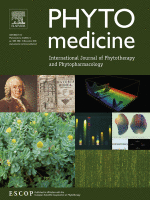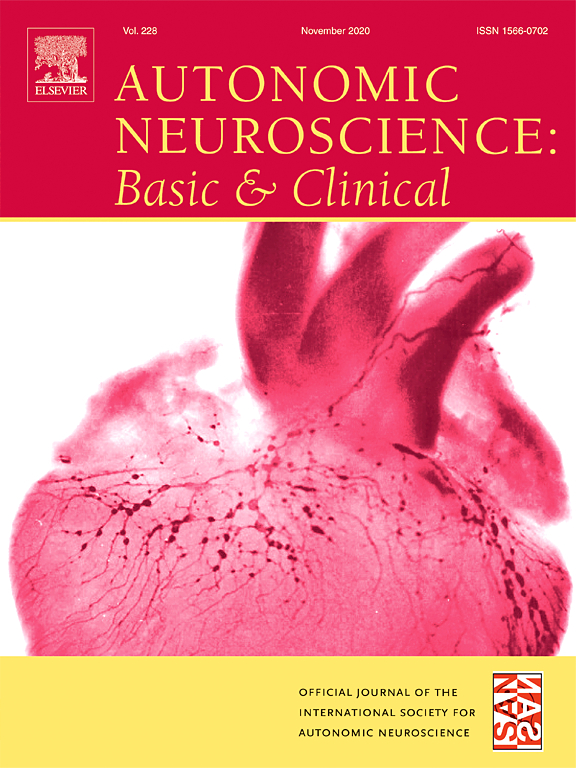Sepsis
How to submit an article:
- Registered users can submit any published journal article that has a unique DOI (Digital Object Identifier) name or link to Research Hub.
- For example, you can paste the full DOI link:
https://doi.org/10.1109/5.771073or just the DOI name:10.1109/5.771073into the field above and click submit. - The person who is first to submit a valid article to Research Hub will forever be credited for it, and every article submission earns you +6 Research Points.
Published research studies are articles that present the findings of original research that has undergone a peer-review process and has been made publicly available in scholarly journals, books or other media.

Huashibaidu formula attenuates sepsis-induced acute lung injury via suppressing cytokine storm: Implications for treatment of COVID-19
2023 Jan Phytomedicine Zhang F, Guo F, Zhang Y, Xu H, Liu Y, Lin L, et al.
The therapeutic mechanism of Huashibaidu formula (HSBD) against sepsis-induced acute lung injury (ALI) mainly involved suppressing cytokine storms and relieving inflammatory symptoms by regulating the expression of TLR4/NF-κB and PI3K/Akt. Our study provides a scientific basis for the mechanistic investigation and clinical application of HSBD in the treatment of sepsis and COVID-19.
Network Pharmacology Acute Lung Injury Hua Shi Bai Du formula Sepsis
Acupuncture modulates immunity in sepsis: Toward a science-based protocol
2021 May 1 Autonomic Neuroscience: Basic and Clinical Pan WX, Fan AY, Chen S, Alemi SF.
Review Article Experimental Study Common Cold, Flu & Viral Infections Sepsis ImmunityAcupuncture, via nerve stimulation, can be a promising treatment strategy for controlling inflammation and improving organ function during sepsis by activating immune reflexes.

Acupuncture at Zusanli (ST36) for Experimental Sepsis: A Systematic Review
2020 Mar 07 Evidence-Based Complementary and Alternative Medicine Lai F, Ren Y, Lai C, Chen R, Yin X, Tan C, et al.
Systematic Review Sepsis ST36Acupuncture at Zusanli (ST36) might be effective in reducing injuries induced by sepsis in various organs by reducing oxidative stress and inflammation.
Research insights are moderated by the Research Hub team and offer an at-a-glance overview of interesting research findings.

2021 Autonomic Neuroscience: Basic and Clinical
Acupuncture, via nerve stimulation, can be a promising treatment strategy for controlling inflammation and improving organ function during sepsis by activating immune reflexes.
Review Article Common Cold, Flu & Viral Infections Immunity
Acupuncture modulates immunity in sepsis: Toward a science-based protocol
Pan WX, Fan AY, Chen S, Alemi SF.

2020 Evidence-Based Complementary and Alternative Medicine
Acupuncture at Zusanli (ST36) might be effective in reducing injuries induced by sepsis in various organs by reducing oxidative stress and inflammation.
Systematic Review ST36
Acupuncture at Zusanli (ST36) for Experimental Sepsis: A Systematic Review
Lai F, Ren Y, Lai C, Chen R, Yin X, Tan C, et al.
Review Articles
Review articles summarise and critically evaluate the current state of research on a specific topic or field by synthesising multiple primary research studies.

Acupuncture modulates immunity in sepsis: Toward a science-based protocol
2021 May 1 Autonomic Neuroscience: Basic and Clinical Pan WX, Fan AY, Chen S, Alemi SF.
Review Article Experimental Study Common Cold, Flu & Viral Infections Sepsis ImmunityAcupuncture, via nerve stimulation, can be a promising treatment strategy for controlling inflammation and improving organ function during sepsis by activating immune reflexes.

Acupuncture at Zusanli (ST36) for Experimental Sepsis: A Systematic Review
2020 Mar 07 Evidence-Based Complementary and Alternative Medicine Lai F, Ren Y, Lai C, Chen R, Yin X, Tan C, et al.
Systematic Review Sepsis ST36Acupuncture at Zusanli (ST36) might be effective in reducing injuries induced by sepsis in various organs by reducing oxidative stress and inflammation.
Clinical Trials
Clinical trials are research studies that involve people and are conducted to evaluate the safety and efficacy of new treatments or interventions, such as drugs, medical devices, or behavioural therapies.
Study Protocols
Published study protocols are detailed plans that outline the objectives, methodology, statistical analyses, and organisation of a research study that have been made publicly available for others to review and use as a reference.
Presentation Slides

Review Article
Acupuncture, via nerve stimulation, can be a promising treatment strategy for controlling inflammation and improving organ function during sepsis by activating immune reflexes.
Pan WX, Fan AY, Chen S, Alemi SF.

Systematic Review
Acupuncture at Zusanli (ST36) might be effective in reducing injuries induced by sepsis in various organs by reducing oxidative stress and inflammation.
Lai F, Ren Y, Lai C, Chen R, Yin X, Tan C, Li J, Yang C, Liang G, Li J, Zeng R
Executive Summary
Write an executive summary in the form of a blog article on the topic of "Research into Chinese medicine treatment for Sepsis" summarising the research below and using language that can be easily understood by patients and avoiding medical jargon using a professional and caring tone of voice.
Write an executive summary in the form of a blog article on the topic of "Researched Chinese medicine treatments for Sepsis" summarising the research below in an objective and easy to understand way, and using language that can be easily understood by patients. Group the article into Chinese medicine treatments first, followed by nutrition and other treatments. Avoid using medical jargon and use a professional and caring tone of voice.
Write me a concise but easy to understand executive summary on the topic of "Chinese medicine treatments for Sepsis" based on the following research that I will give you. Your summary should be 2 paragraphs long in Australian English spelling and include references to the studies.
A Review Article published in 2021 in the journal Autonomic Neuroscience: Basic and Clinical found that Acupuncture, via nerve stimulation, can be a promising treatment strategy for controlling inflammation and improving organ function during sepsis by activating immune reflexes. The study used a neuromodulation approach, leveraging the technique of peripheral nerve stimulation through acupuncture. This was linked with known somatic-autonomous-immune reflexes with the aim to control inflammation and improve organ functions in sepsis cases. The local and systematic effects of this methodology were largely achieved through the activation of several reflexes. These included the somatic-sympathetic-splenic reflex, the somatic-sympathic-adrenal reflex, the somatic-vagal-splenic reflex, and the somatic-vagal-adrenal reflex. The activation of these particular reflexes is what sets acupuncture apart from other nerve stimulation techniques. In terms of results, the method used for immunomodulation and inflammation control showed considerable promise for sepsis treatment. The acupuncture procedure achieved regulation by activating appropriate reflexes which in turn produced a systemic effect, thereby controlling inflammation and enhancing organ function. The research findings underscore acupuncture as an effective therapy, providing significant advantages for immunomodulation in acute inflammation such as sepsis, leading to a comprehensive, evidence-based therapy recommendation.
A Systematic Review published in 2020 in the journal Evidence-Based Complementary and Alternative Medicine found that Acupuncture at Zusanli (ST36) might be effective in reducing injuries induced by sepsis in various organs by reducing oxidative stress and inflammation. The researchers conducted a systematic review of seven databases, covering the inception of each to May 2019. They identified 54 studies that used acupuncture at ST36, a specific acupuncture point, for treating experimental sepsis, drawing from both English and Chinese literature resources. The studies reviewed suggest that acupuncture could serve as a complementary strategy in treating sepsis by reducing damage in multiple body systems: cardiac, lung, kidney, liver, gastrointestinal tract, and the immune system. It's thought to achieve these results through several mechanisms: limiting oxidative stress, managing inflammation, improving microcirculation, and upholding immune balance with the help of dopamine. Worth noting, however, is that these positive findings must be carefully considered due to the methodological quality and potential publication bias of the included studies.
Moderation Tools
Topic
Sign In
Users not signed in are limited to viewing the 5 most recent items of content.
